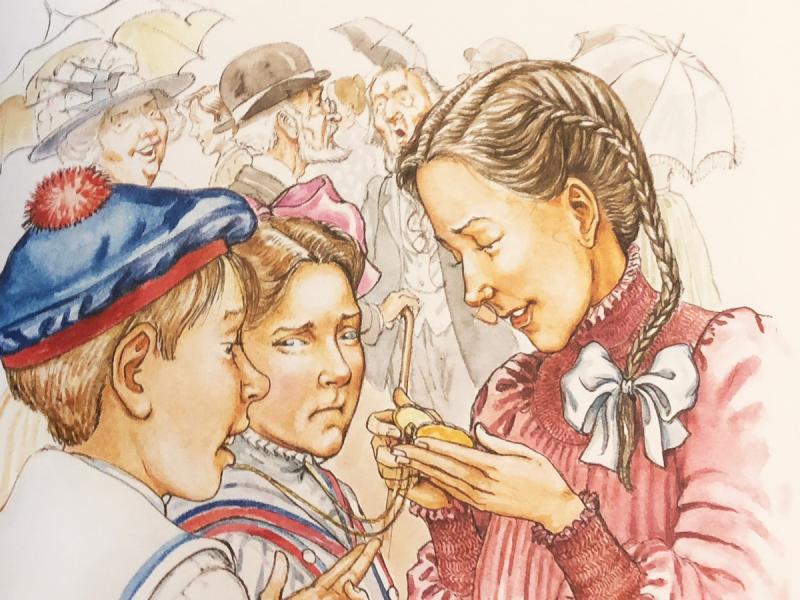History book about Lewes will appeal to children, adults
What do ghost crabs have to do with history?
I’ll answer that question in just a moment, but first I want to say that many sell-out crowds for presentations at last weekend’s history book festival in Lewes confirmed the widespread interest in history. The festival was good for the authors and the readers, and for the economy of the area. Shops, motels, hotels and restaurants all benefited from people who came from far and wide to participate.
Now, about those ghost crabs.
Under the light of a full moon, and the bright beam of a flashlight carried by two young people doing some nighttime beachcombing, a big, blue-eyed ghost crab is highlighted next to the gold chain of a locket half buried in the sand. Ghost crabs usually race into holes in the sand before you have much of a chance to look at them. But in this case, the crab is an illustration on the cover of the newest book published about Lewes - so it can’t run.
Under the sponsorship of Lewes Historical Society, author Ilona Holland and artist Judy Love collaborated to produce “The Lost Locket of Lewes.” Love’s richly colored, boldly detailed pictures illustrate Holland’s story of two youngsters who find a gold locket on a moonlit beach. Revealed by the diggings of a ghost crab, the locket opens a window into the past that mixes magic and reality as the children follow clues into an Alice in Wonderland-style world that lands them in Lewes on the 4th of July in 1893.
In the process, the reader gets a glimpse of how the town would have appeared at that time on one of its most energetically celebrated holidays - then and now. The author introduces real-life townspeople from that era while helping unravel the mystery of the locket found 100 years in the future.
The book is entertaining for children because of its storyline and illustrations, but additional historical information found in the back of the book will also make it attractive to adults interested in Lewes history.
A note about the author in the back of the book explains that she was inspired to write after musing about an actual locket found on the beach in Lewes following the Great Blizzard of 1888. From there she spins a story based partly on fact and partly on fiction. A page after the story’s conclusion gives a list of the historical facts on which Holland’s story hangs.
She also provides biographical information about the central historical figure in the story, Leah Burton, and gives readers a map showing architecturally accurate buildings along the historic Second Street section of Lewes that would have been part of Leah’s world.
Other supplemental information involves the peach industry of that era and a peach-evaporating device designed to give the peaches a longer shelf life; a recipe for muskrat stew; brief biographies of two of Lewes’ most infamous pirate visitors; tips for enjoying historic artifacts; and an album of historical photos.
The book also includes a carefully detailed two-page spread showing a map hand-drawn in 1900 by George Marshall McIllvain. That map chronicles the residential and commercial structures in Lewes in about 1890, along with the names of their owners, plus occasional notations by the mapmaker such as ‘very old.’
Lewes Historical Society Executive Director Mike DiPaolo said to his knowledge, this is the first children’s book about Lewes since the 1980 publication of Barbara Mitchell’s “Cornstalks and Cannonballs,” centered around the bombardment of Lewes by the British during the War of 1812.
“‘The Lost Locket of Lewes’ is an accurately detailed book that people will really enjoy,” said DiPaolo. The author will talk about her research and writing of the book Friday, Oct. 12, as the featured speaker at the historical society’s monthly speaker series. That meeting will begin at 7:30 p.m. in the community center of the Lewes History Museum on Adams Avenue.
“The Lost Locket of Lewes” is available at Lewes Historical Society facilities, Biblion Books and Kids’ Ketch in Lewes, and at Browseabout Books in Rehoboth Beach.


















































